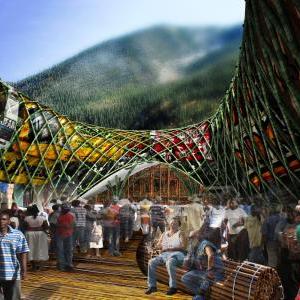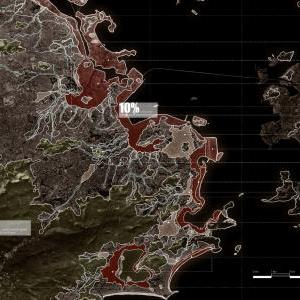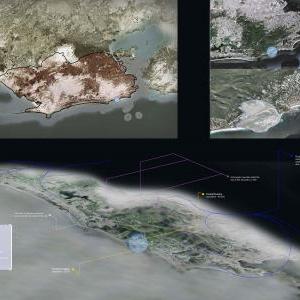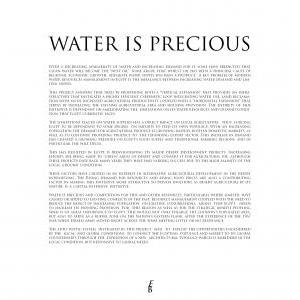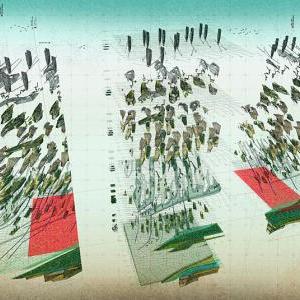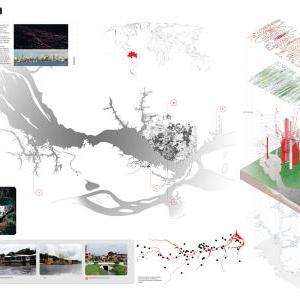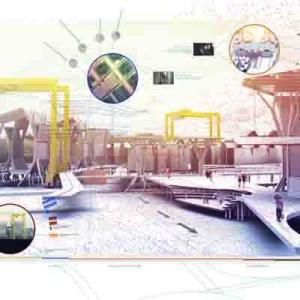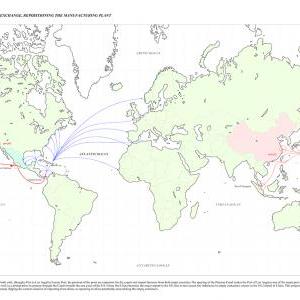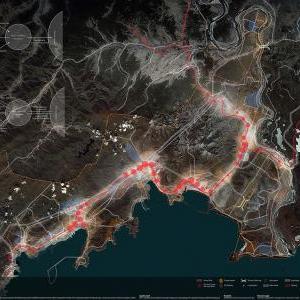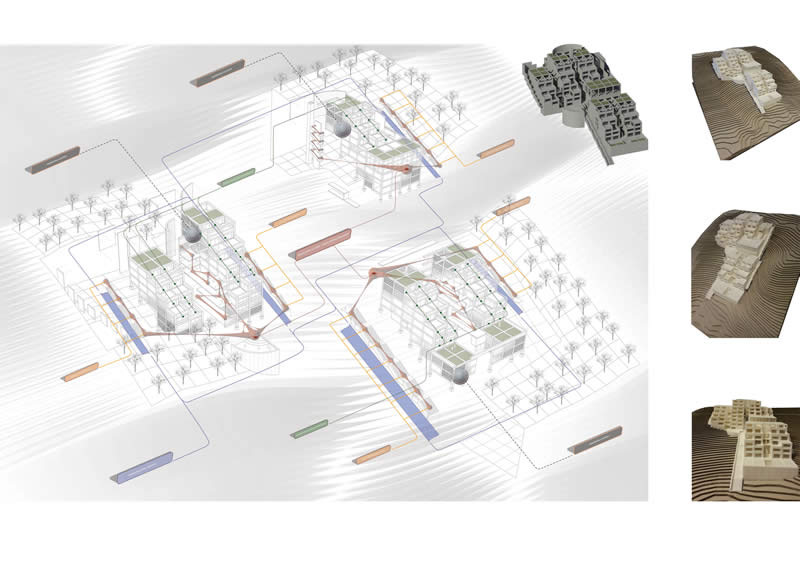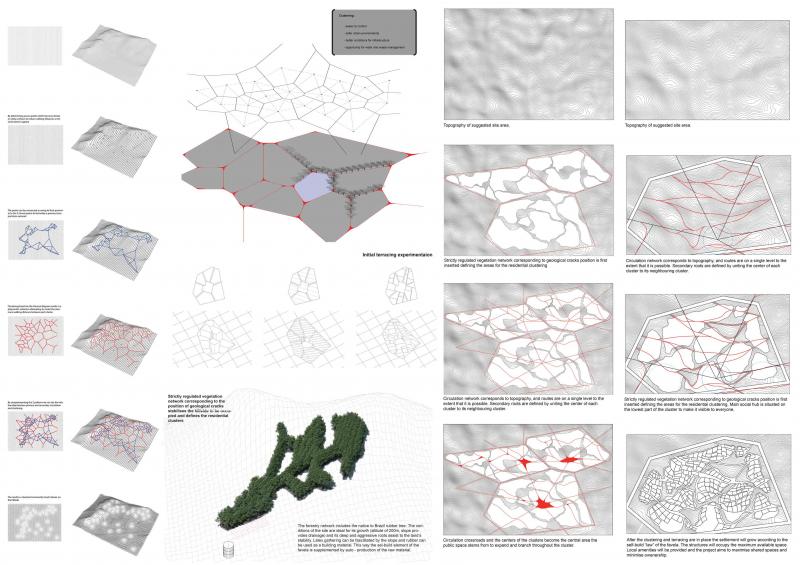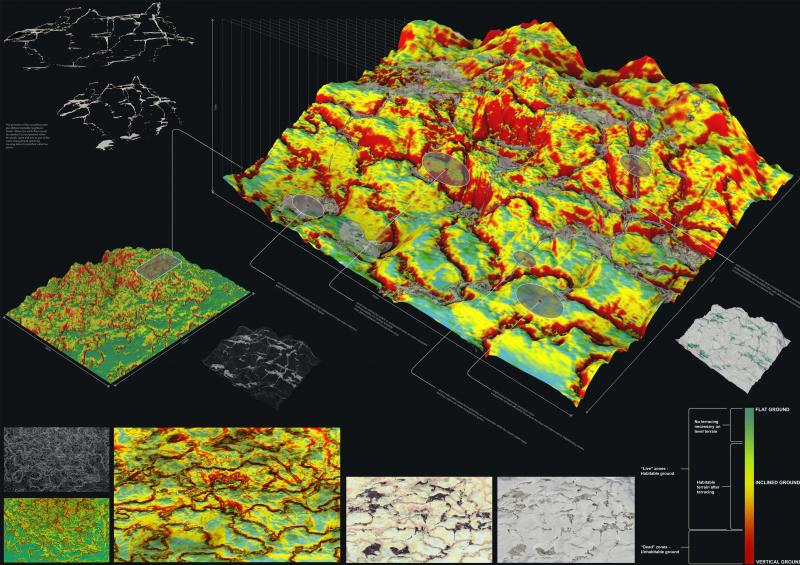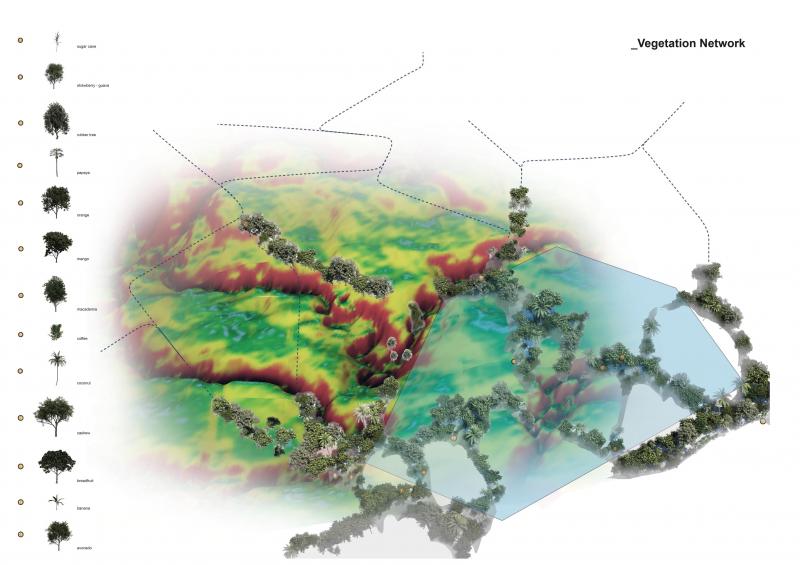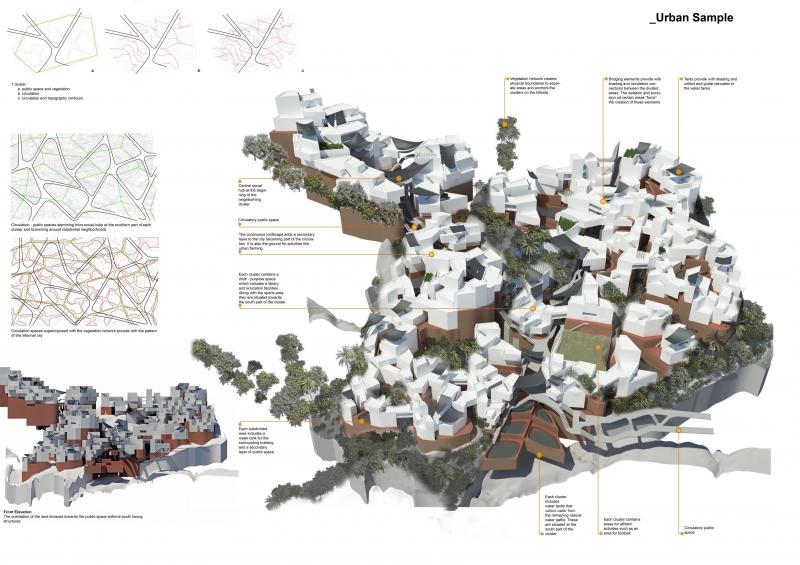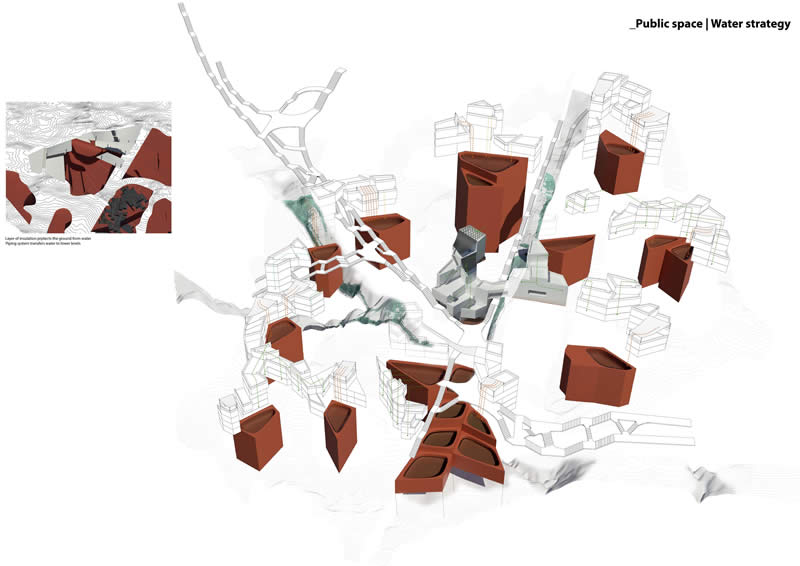Diploma 16 is continuing its exploration of emerging design and fabrication techniques capable of addressing the complexity of adaptation to new environmental contingencies. The unit firmly harbours the idea that experimentation in the design and material manifestation of our physical environment is critical to sustaining our world.
We believe in a ‘no fear of failure’ ethos through a vigorous experimental design culture that exploits the projective capacity of both architecture and planning. We are pursuing grand architectural and urban visions with the intent to engender a fertile ground for invention in relation to regenerative development. The work continues to explore of our changing environmental, social, economic and cultural conditions as a springboard for innovative production models, ecological urban and architectural design, and visionary tectonics.
The Super Order agenda experiments with the city as a design project. The brief proposes the establishment of new socio-economic, environmental and cultural orders as primers for resilient and self-generating urban morphology. This prototypical urban form and structure, intended for tabula rasa conditions, is underpinned by the belief that new forms emerge from the discovery of new materials coupled with the development of design, fabrication and production tools. We deploy new material in the pursuit of cultural and biome-specific public space and urban fabric, where morphology and a time-based metabolism (in)form an urban ecology.
Despite the current economic climate bordering on a global depression, new model cities are being designed and constructed around the world. The unit is searching for a detailed understanding of how these projects impact the environment. How can questions pertaining to technology, nature and human factors be balanced in the formation of an overall architectural ecology? How can architecture and planning give more back to our natural environment than it takes? To answer these questions Diploma 16 produces work that is given a material and tectonic expression focusing on the new form of civic (social) space, carbon-neutral (technology) performance, biome (environment) specificities, and the new architectonic (design) order.
Unit Masters
Andrew Wai-Tat Yau
Jonas Lundberg
Supported by
Andrea Marini
Kengo Skorick
Michael Kloihofer
Structural Consultancy
AKT
Imperial College
Special thanks to
Brett Steele, Marilyn Dyer, Belinda Flaherty and all the other members of the AA community who have supported us throughout the year. Also special thanks to the Technical Studies team and our guest critics for their invaluable contribution.
Antonis Nikitaras
The project argues that by addressing the threats posed to the hillside settlements of Rio de Janeiro, such as the constant threat of landslides, opportunities rise for the development of a socially sustainable and physically secure urban development. The development of a micro eco-system within the city acts against the possibility of a landslide and leads to a hybrid form of urban environment consisting of the natural eco-system and the human settlement. In terms of public space, the projects aims towards a polycentric urbanism with public spaces defined by commercial and cultural activity, which stem from a central social hub and branch towards the residential parts, overlaid on circulation. The chosen site is in between of two existing settlements, favela Rocinha and favela do Vidigal.
By introducing strictly regulated forestry strategically placed along the slope, combined with rain water management it is possible to secure a developing settlement and protect it from the threat of a landslide. Heavy rain showers that are the usual cause of landslides can be manipulated and rainwater can be stored, and act as irrigation for the introduced forestry. The micro ecosystem allows for urban agricultural activities.
The pattern for the informal city occurs from the superimposition of the slope analysis which reveals geological cracks and inaccessible areas with the water flow on the hillside. The urban fabric consists of small neighborhoods that comprise a larger whole. This allows for the positive qualities of the small favela to be incorporated within the larger settlement whose concentrated population translates in possibility for commercial development.
